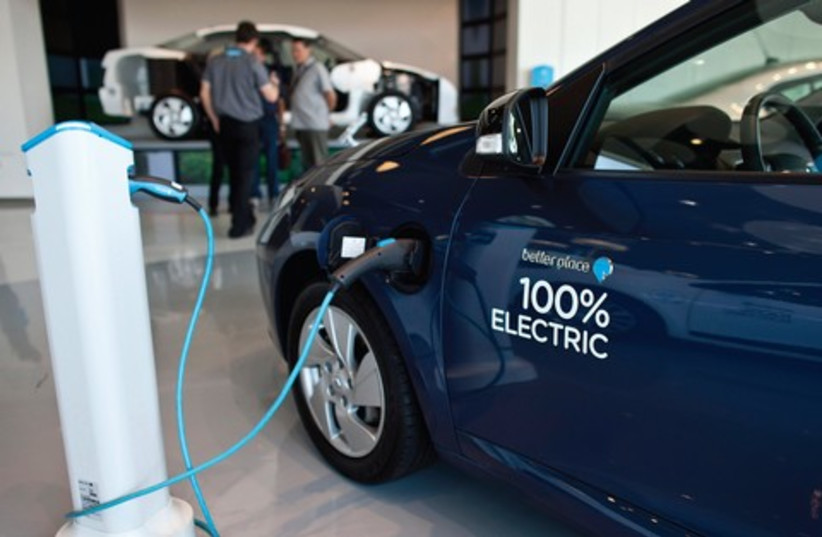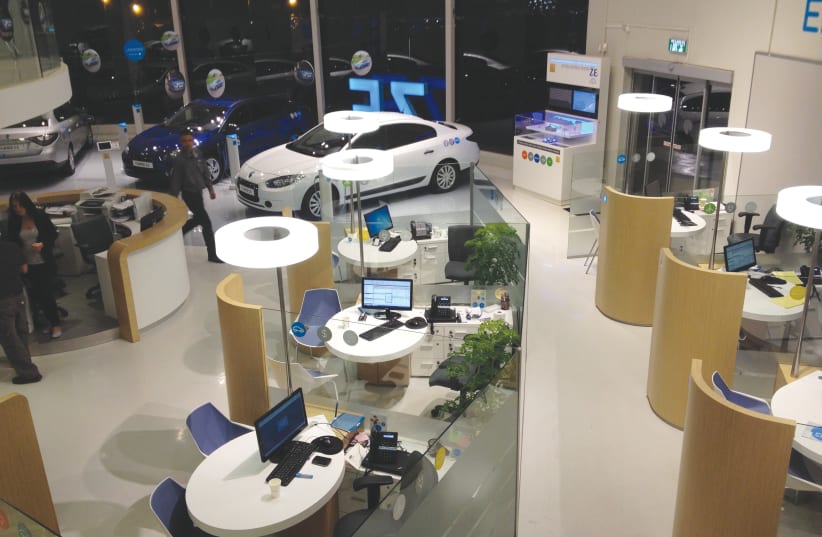In the summer of 2012, exactly 10 years ago, my wife, Jody, and I bought a Renault Fluence ZE, the 100% battery-powered car sold in Israel by high-flying battery swap start-up Better Place. We were, at the time, staunch electric car champions.
A decade later, though, my electric enthusiasm has started to lose its charge.
We were sold on Better Place because we believed electric vehicles (EVs) represented a small but significant step toward reducing the ravages of climate change. EVs would help wean the world off fossil fuels, reduce pollution-related illness and death, while providing a smoother, faster and more sophisticated ride.
None of that has changed, per se, but EVs, it turns out, aren’t as carbon neutral as I’d once hoped.
The problem isn’t while cruising around town, where the emissions from EVs (there are none) are far superior to their gas-guzzling counterparts. Rather, it’s what happens before the car is even assembled – and what happens when it’s time to put that EV out to pasture.


Steve Greenfield, founder and CEO of Automotive Ventures, a venture capital fund focused on investments in the mobility space and author of the forthcoming book The Future of Automotive Retail, shared some sobering facts with me.
One of the key elements making up the modern electric car battery is lithium. Mining it is far from climate friendly, requiring some 70,000 liters of water to make a single ton of lithium.
More than half of global lithium resources is located in the “lithium triangle” between Argentina, Bolivia and Chile. The lithium must then be sent – on decidedly carbon unfriendly ships – to China, where 80% of the world’s lithium-ion batteries are made.
EV batteries also require cobalt, where the waste generated from mining this metal pollutes both air and soil, leading to decreased crop yields, contaminated food and water, and respiratory and reproductive health issues. As for the atmosphere, mining cobalt releases both carbon dioxide and nitrogen dioxide.
There’s also the human cost.
More than 70% of the world’s cobalt comes from the Democratic Republic of the Congo, where an estimated 200,000 miners – including 25,000 children – can be found digging underground in small-scale “artisanal mines” with little oversight and even fewer safety measures.
“Cobalt is an essential mineral for the green transition,” says Anneke Van Woudenberg, who directs the corporate watchdog Raid, “but we must not turn away from the abusive labor conditions that taint the lithium-ion batteries needed for millions of electric vehicles.”
At the other end of an EV’s life, another environmental calamity awaits: Electric cars have nowhere to go to die.
Traditional internal combustion engine vehicles, after they’ve reached a certain age, are either stripped down for parts or, if they’re still roadworthy, sent to emerging economies where they embark on a second life.
In the first case, when an internal combustion engine (ICE) vehicle passes its prime, a network of global “dismantlers” stands at the ready to take it apart and sell off any raw materials. Dismantlers have serious concerns regarding EVs, however, Greenfield told me: Electric car batteries have been known to explode, and the chemicals in them can be toxic if not handled carefully.
As for giving EVs a second life, there’s little appetite for them at the present moment in much of Africa, India or Asia, where electric charge spots are nearly nonexistent – although, as Yosef Abramowitz, CEO of Gigawatt Global, told me, “Distributed solar charge spots could be a good solution” in places where the power grid is spotty and reliable delivery of fuel is tenuous.
Despite all of these very real problems, nearly every automotive manufacturer has plans to electrify its offerings in the coming years. General Motors CEO Mary Barra says her company will stop making gasoline-powered cars entirely by 2035. And the success of Tesla is undeniable: In February of this year, the company’s valuation was roughly six times the market value of GM and Ford combined.
It’s understandable why battery-powered electric vehicles have become the next big thing. Batteries are a well-understood technology that can be tweaked to provide better range and energy density, as opposed to something entirely new that still requires years of R&D.
And yet, I sometimes feel that electric car enthusiasts and manufacturers have a blind spot when it comes to the EV’s overall benefit in ameliorating climate change.
I DON’T mean to be a curmudgeon by throwing shade on the electric battery juggernaut that has enraptured so many. The problems with lithium-ion battery disposal and recycling will eventually be solved. New battery technologies are coming that will reduce our reliance on cobalt.
Other fuel types – hydrogen in particular – hold promise, too, if not for cars (that train has long since left the station) then for transportation that entails longer distances than a rack of limited-range batteries can handle (think air travel, where being forced to land a dozen times en route in order to recharge is a nonstarter).
Plus, the only emissions from a hydrogen-powered vehicle are water vapor, although producing hydrogen remains problematic. (Reconfiguring the grid to generate electricity from renewables such as solar, wind and hydro will be key here – for charging EVs, too.)
I loved our Better Place Fluence ZE. Despite getting burned when the company declared bankruptcy in 2013, we will probably buy another EV when the time comes.
But let’s be prudent and remove our ideological blinders. EVs are not a magic panacea. They may be the most immediate and functional approach to addressing climate change on an individual level, but there is still much work to be done.
The future of transportation technology will ultimately be more nuanced than today’s evangelical all-or-nothing EV approach. ■
The writer’s book, Totaled: The Billion-Dollar Crash of the Startup that Took on Big Auto, Big Oil and the World, is available on Amazon and other online booksellers. brianblum.com
